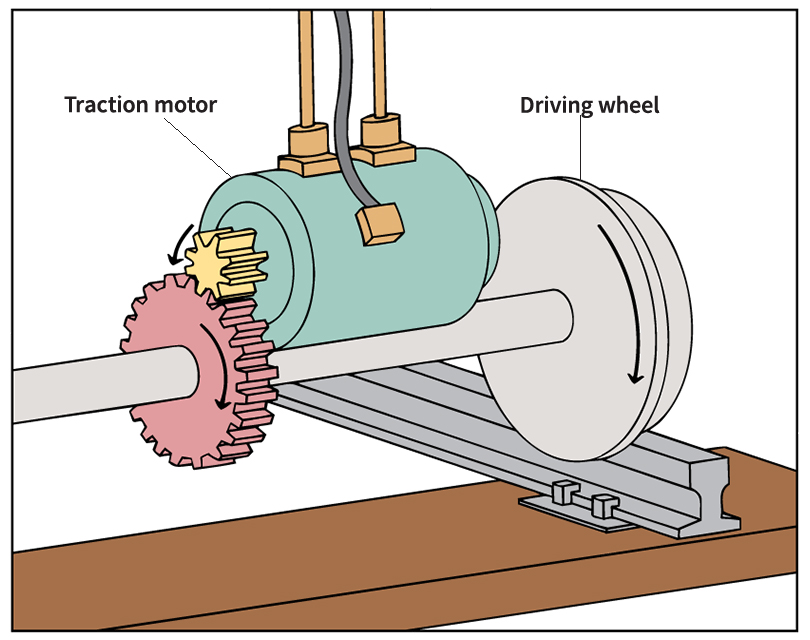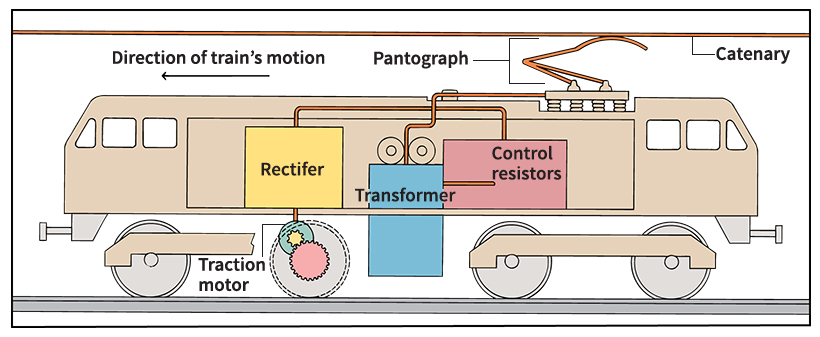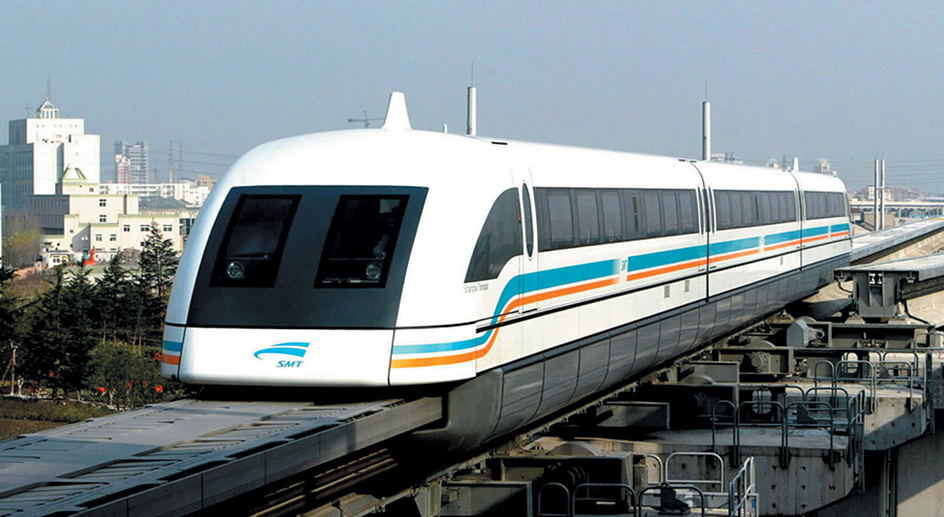Electric railroad is an electrically powered railway system. Electrically powered trains include high-speed passenger trains; some freight trains; and the subways, elevated systems, and streetcars found in certain cities. The electric power to run an electric train comes from an external source—a central power plant—rather than from an engine or generator on board the train.

Electric trains have many advantages. They are quieter than other trains and do not produce smoke or exhaust. Coal, gas, oil, nuclear power, or water power can generate electric power for an electric train. In contrast, diesel trains run only on diesel oil. Electric trains also travel faster than any other trains. Several countries in Europe and Asia have high-speed electric trains. Some of these trains operate at more than 200 miles (320 kilometers) per hour. The world’s fastest electric trains operate on maglev (magnetic levitation) systems. These trains float above their tracks. In demonstrations, maglev trains have exceeded 370 miles (600 kilometers) per hour.
Electric railroads provide intercity service (service between cities). These railroads also offer intra-urban or commuter service, which carries passengers within cities and between cities and their suburbs. Electric railroads are common in many European countries and in Japan. However, in the United States only about 1 percent, or 2,000 miles (3,200 kilometers), of intercity track is electrified.
Kinds of electric railroads.
Most intercity electric trains receive power through an overhead wire called a catenary. In the overhead wire system, a steel framework connects a car to a catenary. This car is usually a locomotive designed to move the rest of the train. The framework, called a pantograph, delivers electric current from the wire to the locomotive’s propulsion system. This system includes the traction motors. Traction motors power the driving wheels, which actually move the locomotive.

Intercity electric trains have one or more locomotives that pull freight or passenger cars. Most electric locomotives weigh between 100 and 200 tons (90 and 180 metric tons) and provide about 6,000 to 7,000 horsepower (4,500 to 5,200 kilowatts). They can reach speeds of over 150 miles (240 kilometers) per hour.
An electrified third rail delivers electric power to most intra-urban electric trains. Trains using a third rail have metal plates called shoes. Two shoes attach to the bottom of a locomotive or railcar. The shoes slide along the third rail, delivering electric current to the car’s propulsion system.
Loading the player...Direct-current motor
Some intra-urban railcars can propel themselves with traction motors, which range from 119 to 282 horsepower (89 to 210 kilowatts). Others are driven by separate locomotives. Intra-urban railcars reach speeds of about 50 to 75 miles (80 to 120 kilometers) per hour.
Unlike most electric trains, a maglev train has little or no contact with a track or wires. The track for maglev trains consists of a single guideway, which the vehicle straddles but does not touch when in motion. Electromagnetic forces lift the train above the track and propel it forward.

History.
In the early 1800’s, the Scottish inventor Robert Davidson built the first full-sized electric locomotive. But the high cost of producing electric power made it too expensive for general use by railroads. The development of the electric generator in the mid-1800’s made the modern electric railway possible. This device generated a current of high voltage at low cost.
The first commercial electric street railway began operation in Lichterfelde, Germany, in 1881. In 1887, Frank J. Sprague, an American inventor, built the Union Passenger Railway in Richmond, Virginia. This was the first large electric railway system. By the early 1900’s, electric elevated trains operated in Chicago, Boston, and New York City. Europe built many electric intercity tracks in the late 1940’s. The first high-speed electric train, Japan’s Shinkansen, began running in 1964. France’s TGV began service in 1981.
Loading the player...An electric railroad
